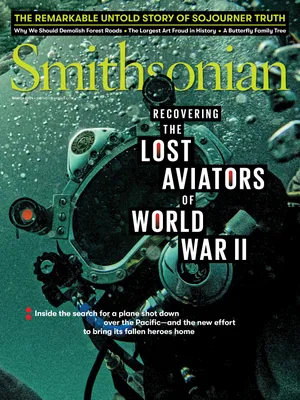OFFICE OF THE SECRETARY OF THE SMITHSONIAN
Relive the Glamour of Hollywood’s Golden Age With These Photos
The work of a pioneering celebrity photographer shines a spotlight on the iconic era
:focal(800x564:801x565)/https://tf-cmsv2-smithsonianmag-media.s3.amazonaws.com/filer_public/c7/d4/c7d4e6d3-c1c3-451f-a25d-8b2b43b7471b/mar2024_a02_secretarycolumn.jpg)
The National Portrait Gallery’s newest exhibition takes us back to the Hollywood of the 1930s and 1940s, when movie tickets sold for mere coins. “Star Power: Photographs From Hollywood’s Golden Age by George Hurrell” features black-and-white images of actors who were among the world’s first film stars. Through his photography, Hurrell helped create the prototype for what celebrity looks like today.
Early on, he garnered attention for photographing stunt pilot Florence “Pancho” Barnes. He was a pioneer at using light and shadows to create glamorous and romantic portraits that helped transform actresses into icons. At just 25, he was hired at Metro-Goldwyn-Mayer, a studio that boasted “more stars than there are in heaven.” Three years later, he opened his own studio on Sunset Boulevard and did work for Warner Bros. and Columbia Pictures before serving with a military film production unit in World War II.
But the world captured in Hurrell’s images was just an illusion. The stars of Hollywood’s golden age were meticulously created with little input from the actors themselves. Studios were responsible for transforming actors into celebrities, a process that could include everything from changing their names to make them sound more alluring—or, in some cases, to make them sound white—to elaborate makeovers that highlighted their features.
/https://tf-cmsv2-smithsonianmag-media.s3.amazonaws.com/filer_public/cd/cd/cdcdc0ac-50a5-4157-b565-fbf64affeec7/mar2024_a04_secretarycolumn.jpg)
/https://tf-cmsv2-smithsonianmag-media.s3.amazonaws.com/filer_public/ce/5a/ce5ad87b-c137-4020-a225-c8b06f47f224/mar2024_a03_secretarycolumn.jpg)
As a studio photographer, he was an integral cog in the publicity wheel. It was through his lens that actors gained a public persona. His images, published in the pages of film-industry magazines and widely read periodicals like Vanity Fair, were often accompanied by writers’ fictionalized narratives about the actors crafted to grab the public’s attention. Walking through the “Star Power” exhibition is reminiscent of flipping through a magazine. Many of Hurrell’s photos were also used on promotional posters. The images remind me of some of my favorite classic movies.
A portrait of Clark Gable and Joan Crawford, taken to promote their 1936 romantic comedy Love on the Run, is an arresting, iconic image that speaks to Hurrell’s affinity for glamour. A portrait of Bill “Bojangles” Robinson captures him on a staircase, seemingly poised to break into dance. The image calls to mind his famous tap routine with Shirley Temple in the 1935 film The Little Colonel. Robinson, one of the few Black actors in Hollywood at the time, was only afforded starring roles in movies with all-Black casts. In other films—including The Little Colonel—he played supporting characters who were reduced to caricature.
Greta Garbo’s photograph is from the only portrait session Hurrell ever had with her. In it, she gazes away from the lens, hair in neat ringlets and a single gloved hand at her chin. For me, it’s an image that brings to mind Garbo’s role in the 1939 masterpiece Ninotchka, in which she plays a Soviet bureaucrat transformed by her time in Paris.
Taken as a whole, the exhibition is steeped in the nostalgia of early cinema—despite all the faults of the industry. There is something timeless about these glossy portraits. They are pieces of history, captured just off-screen.
/https://tf-cmsv2-smithsonianmag-media.s3.amazonaws.com/filer_public/c2/a7/c2a7e322-b0a8-4bdc-ba2f-9abb78e28dec/mar2024_a05_secretarycolumn.jpg)
